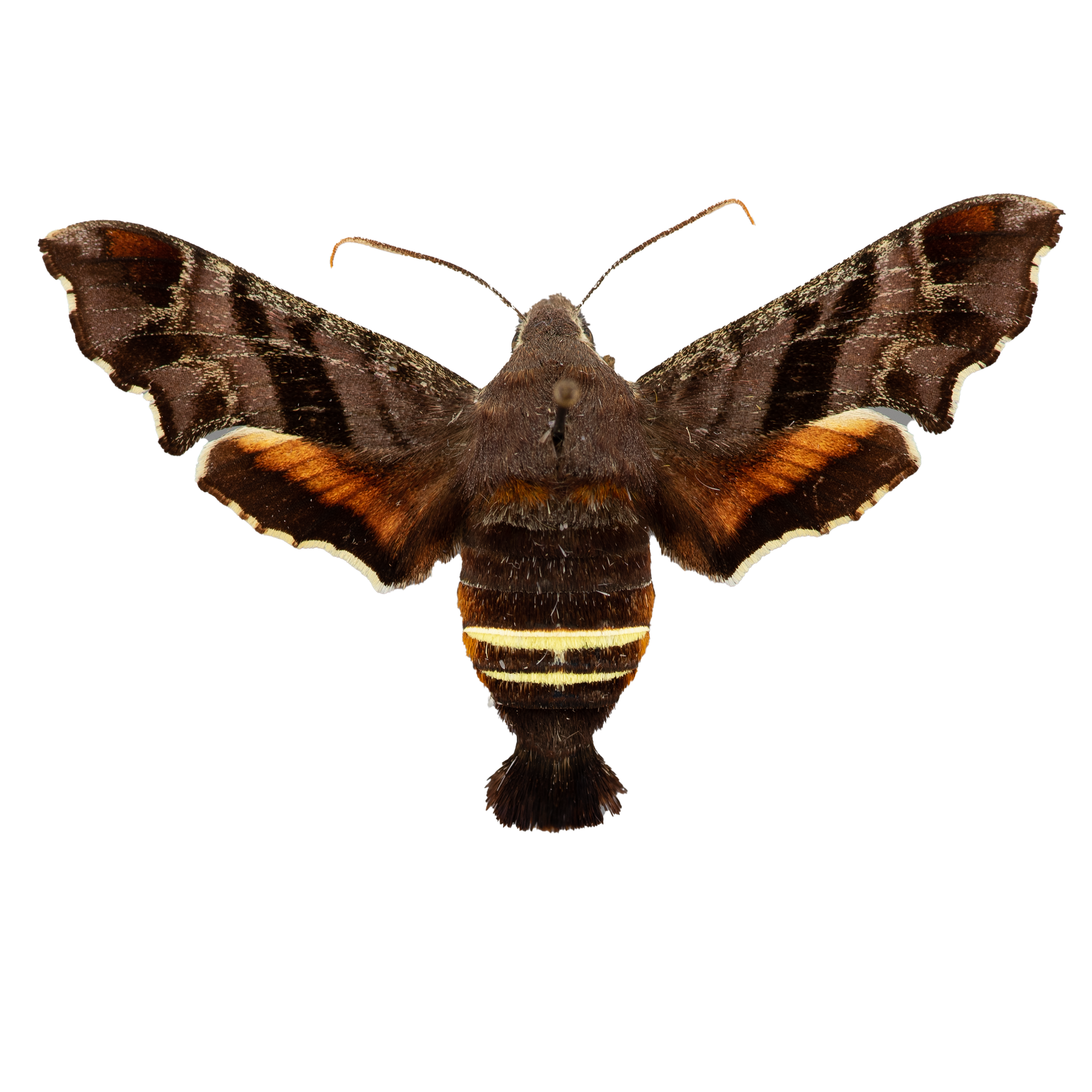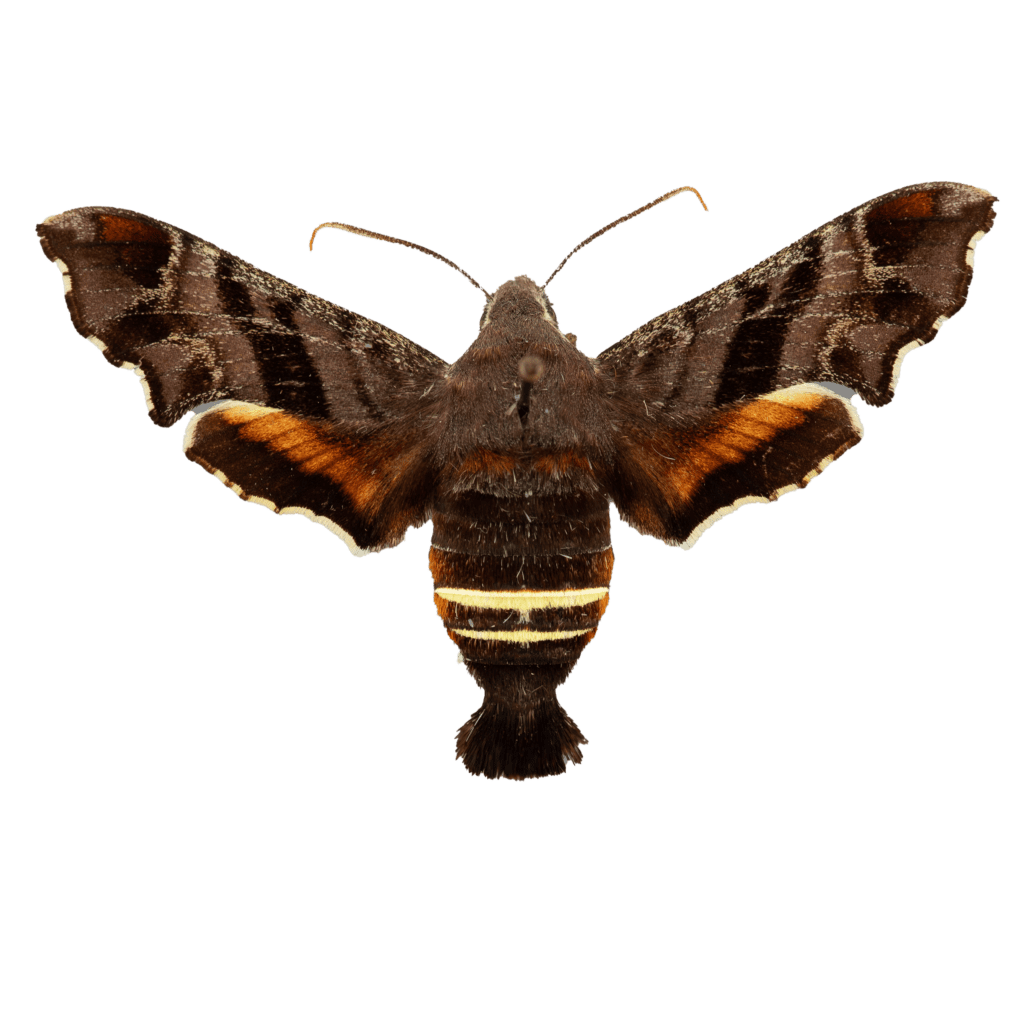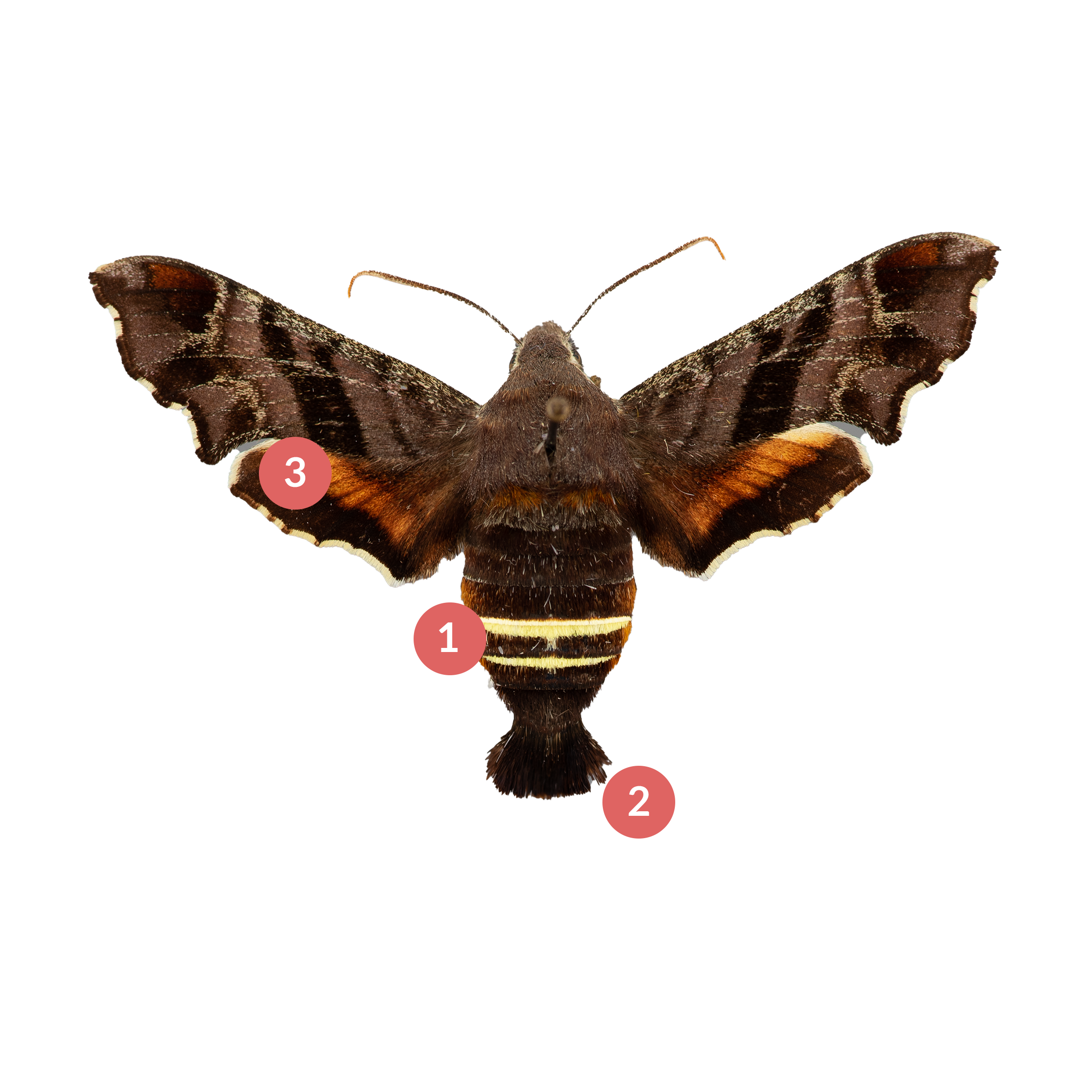About
Amphion floridensis, commonly known as the Nessus Sphinx, is a large moth with a distinctive greenish-brown coloration and a diagonal pinkish-orange band on its forewing. Its hindwings are pinkish-brown with a subtle yellow stripe near the outer edge.
With a wingspan of up to 4 inches, it is a rapid and strong flyer, which fulfills its reputation as a member of the Sphingidae family. Its abdomen features two bold, bright yellow stripes, which are thought to mimic the markings of a wasp as a defense mechanism against predators.
The name “Sphinx” comes from the caterpillar’s habit of rearing its head up when threatened and looking like an Egyptian sphinx. A fun fact about this species is that it is one of the few moths that can hover in place like a hummingbird, using its wings to stay suspended in the air. The species name, floridensis, refers to the moth’s native habitat in Florida.
Deciduous forests, mixed woodlands, orchards, and even suburban areas with large trees


